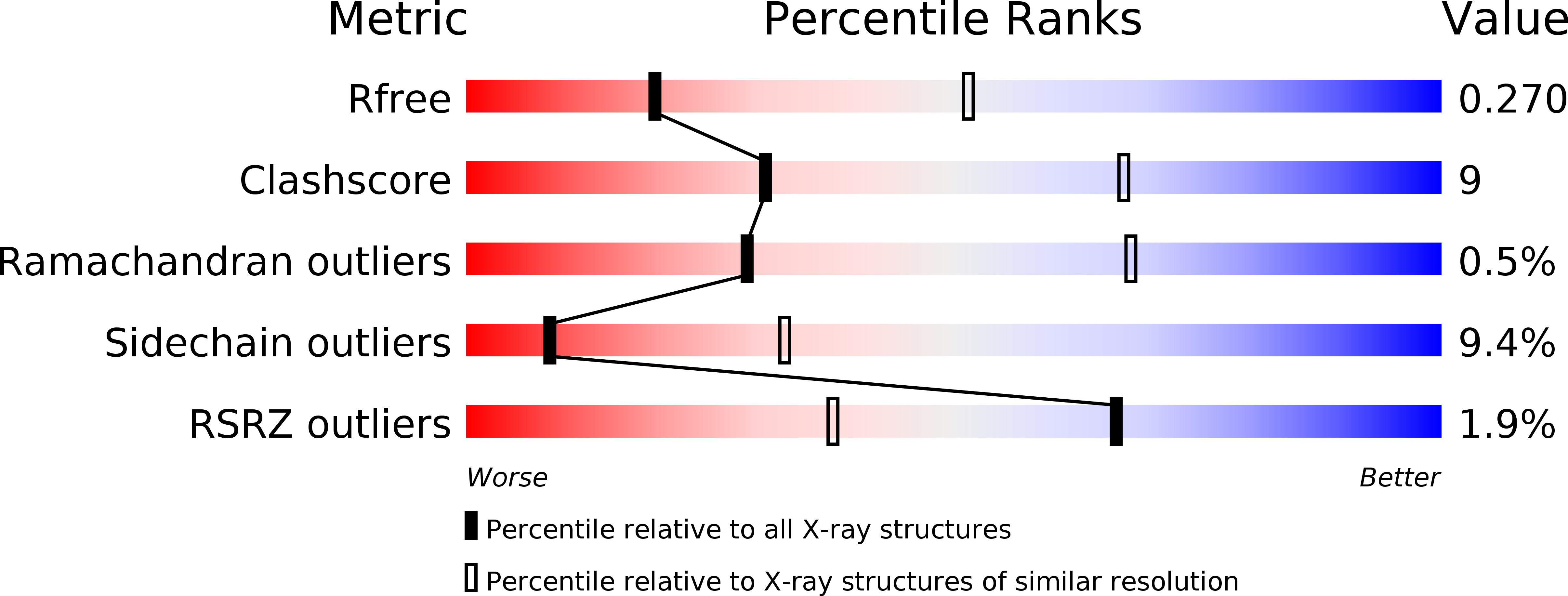
Deposition Date
2010-04-30
Release Date
2010-06-09
Last Version Date
2024-02-21
Entry Detail
PDB ID:
3MT5
Keywords:
Title:
Crystal Structure of the Human BK Gating Apparatus
Biological Source:
Source Organism:
Homo sapiens (Taxon ID: 9606)
Host Organism:
Method Details:
Experimental Method:
Resolution:
3.00 Å
R-Value Free:
0.27
R-Value Work:
0.24
R-Value Observed:
0.24
Space Group:
P 63 2 2


